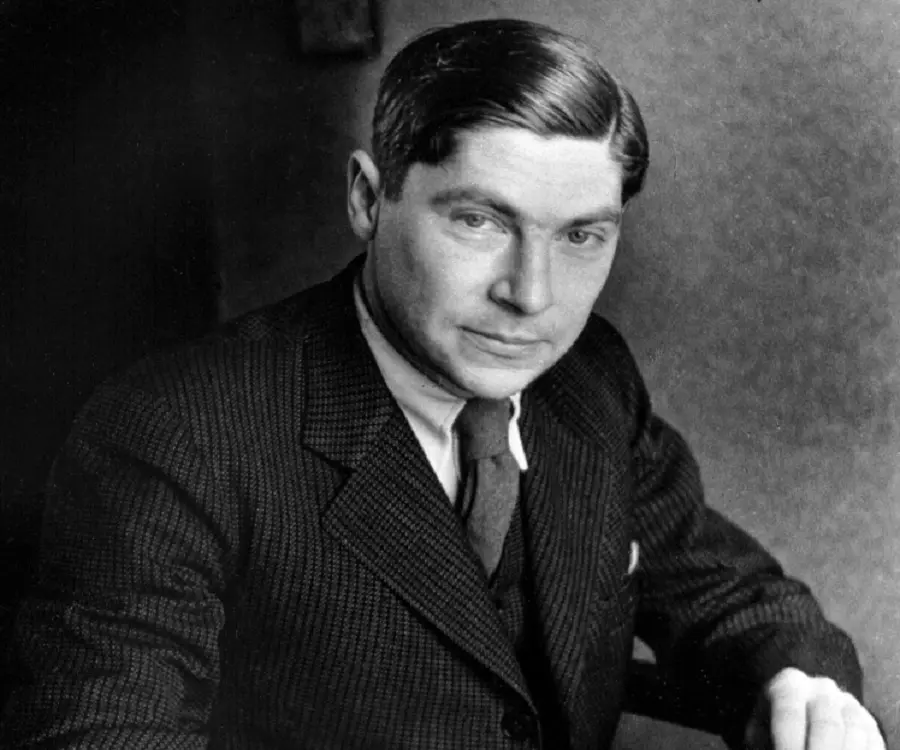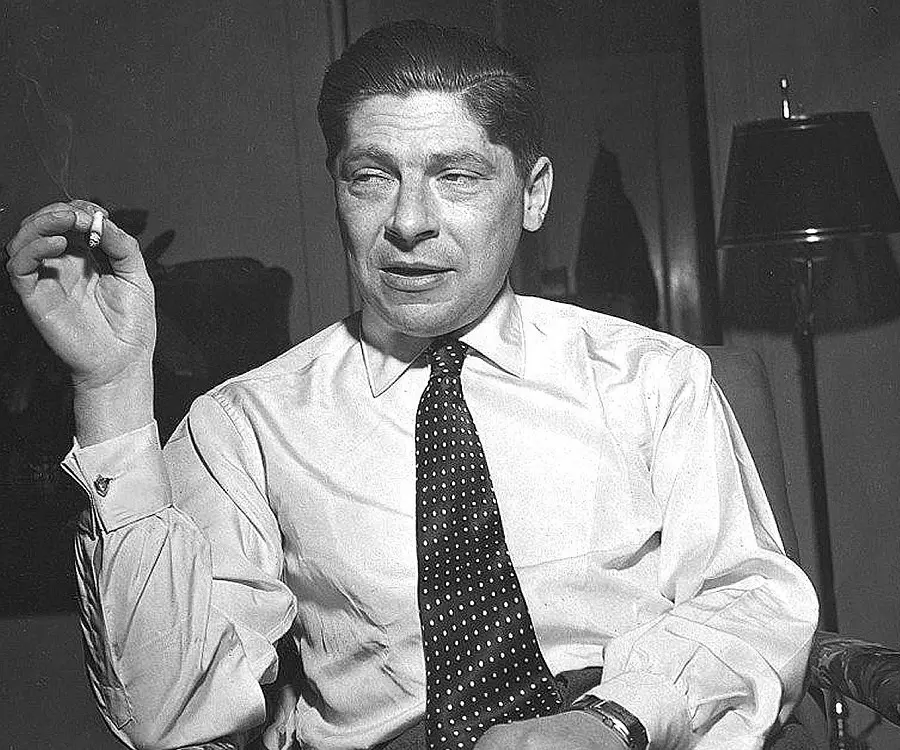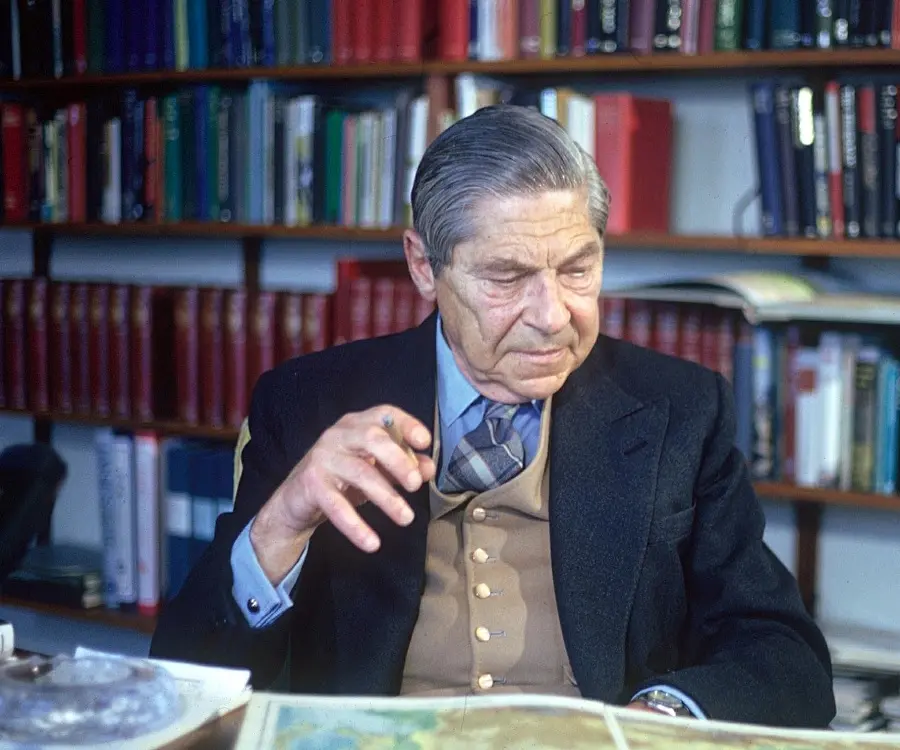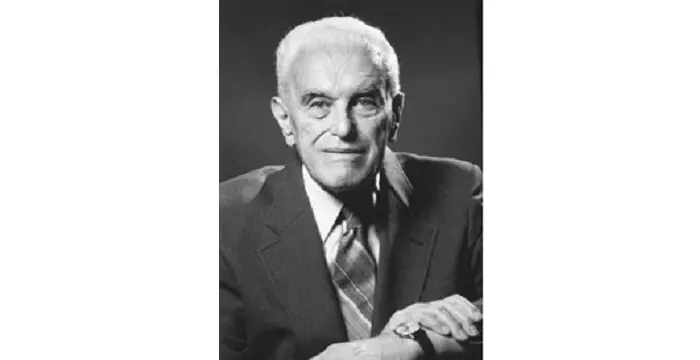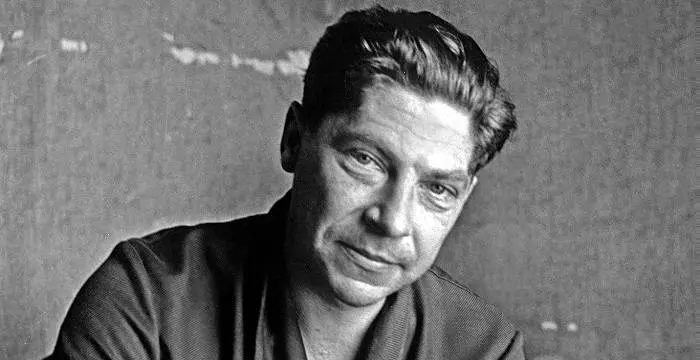
Arthur Koestler - Journalists, Timeline and Family
Arthur Koestler's Personal Details
Arthur Koestler was a Hungarian-British author and journalist best known for his book ‘Darkness at Noon.’ This biography of Arthur Koestler provides detailed information about his childhood, life, achievements, works & timeline.
| Information | Detail |
|---|---|
| Birthday | September 5, 1905 |
| Died on | March 1, 1983 |
| Nationality | Hungarian, British |
| Famous | Media Personalities, Journalists, Writers |
| Spouses | Cynthia Jefferies (1965–83), Dorothy Ascher (1935–50), Mamaine Paget (1950–52) |
| Childrens | Cristina |
| Universities |
|
| Cause of death |
|
| Birth Place | Budapest, Austria-Hungary |
| Born Country | Hungary |
| Political Ideology | Zionism, Communism, Anti-Communism, Voluntary Euthanasia, Anti-totalitarian |
| Gender | Male |
| Father | Henrik Koestler |
| Mother | Adele Koestler |
| Sun Sign | Virgo |
| Born in | Budapest, Austria-Hungary |
| Died at Age | 77 |
// Famous Writers
Joyce Meyer
Joyce Meyer is a Christian author and speaker. This biography provides detailed information about her childhood, life, achievements, works & timeline
Temple Grandin
Temple Grandin is a well-known American writer, autistic activist and animal expert. This biography profiles her childhood, life, achievements, career and timeline
Tennessee Williams
Tennessee Williams was one of the greatest playwrights of the 20th century. This biography of Tennessee Williams provides detailed information about his childhood, life, achievements, works and timeline.
Arthur Koestler's photo
Who is Arthur Koestler?
Arthur Koestler was a British author and journalist of Hungarian origins who was best known for his political novel ‘Darkness at Noon.’ He was once involved with the Communist Party of Germany and was sent to the Soviet Union to write about its first five-year plan. The book he wrote after much extensive research was rejected by the Soviet authorities on the ground that it contained too many criticisms of communism. He later left the Communist party disillusioned with Stalinism. During 1930s and 1940s, he was one of the main politically active authors who were open and unabashed in their criticism of Soviet totalitarianism during the cold war period. Fluent in four languages including French and German, he supported many political causes in the several novels, biographies and essays he wrote. His first novel ‘The Gladiators’ was an allegory for the corruption of communism by Stalin and his second novel, the critically acclaimed ‘Darkness at Noon’, reflected his views on totalitarianism. He was a strong advocate of the Zionist movement. During World War II, he was interned as a political prisoner in the ‘Le Vernet Internment Camp’ but was released in early 1940 owing to strong British pressure. He wrote of his experience in the camp in his book ‘Scum of the Earth.’ Other than politics, he was also interested in topics such as euthanasia, existentialism, psychology, paranormal happenings, etc
// Famous Journalists
Sunny Hostin
Sunny Hostin is an American lawyer, social commentator, columnist and journalist. Check out this biography to know about her childhood, family life, achievements and fun facts about her.
Melinda Farrell
Melinda Farrell is an internationally renowned sports anchor and freelance sports reporter. This biography profiles her childhood, life, career, achievements, and some facts.
Pete Hegseth
Pete Hegseth is a FOX News Channel contributor from America. Check out this biography to know about his childhood, family life, achievements and fun facts about him.
Childhood & Early Life
Arthur Koestler was born in Budapest, Hungary, as the only son of Henrik Koestler, an industrialist and inventor, and Adele. His parents were Jews though Koestler himself renounced religion later on.
He enrolled in the University of Vienna in 1922 for a degree in engineering. There he became attracted to the Zionist movement. His father’s business failed and he could not pay his college fees. Thus, he was expelled before he could complete his degree.
Career
In 1926, he left for Palestine to look for a job. At first he could find only a menial job as a farm labourer, but then he was selected as a Jerusalem-based correspondent for German Newspapers.
Over the next two years he worked and traveled extensively, specializing in political writing which established his reputation as a journalist. In 1929, he was appointed to the bureau of the Ullstein News Service and in 1931 he became the science editor of Vossische Zeitung.
In 1937, he wrote his first memoir, ‘Spanish Testament’, describing his experiences as a prisoner sentenced to death by the National Forces of General Franco during the Spanish Civil War. He was eventually exchanged for a ‘high value’ Nationalist prisoner held by the Loyalists.
He published his first novel ‘The Gladiators‘ in 1939. It ostensibly dealt with the Spartacus revolt in the Roman Republic though it was actually an allegory for the corrupt practices involved in Stalin’s socialism.
After the outbreak of World War II in 1939, Koestler was detained for several months in Le Vernet Internment Camp in France. He was released in early 1940 due to strong British pressure.
His second novel, ‘Darkness at Noon’, published in 1940 was the story of a Bolshevik imprisoned and tried for treason against the government. The storyline alluded to his disillusionment with communism.
His second memoir, ‘Scum of the Earth’ (1941) is a vivid account of his life as a prisoner in Le Vernet concentration camp in France during 1939-40.
He wrote his book ‘Dialogue with Death’ in 1937 as a section of his memoir ‘Spanish Testament.’ This section which describes his experiences as a prisoner on death row was published as a book in its own right in 1942.
Two other books, ‘Arrival and Departure’ (1943) and ‘Thieves in the Night’ (1946) were published in the following years though they could not find much popularity among the readers. He published two other memoirs in the 1950’s.
Major Works
His political novel ‘Darkness at Noon’ published in 1940 is his best known work. The book reflected his disillusionment with communism in the Soviet Union. It is one of the most popular anti-communist books ever written.
His second memoir, ‘Scum of the Earth’ (1941), in which he described his life as a political prisoner in the Le Vernet Concentration Camp in France and his eventual escape, earned many positive reviews from critics.
Awards & Achievements
He was awarded the Sonning Prize "for outstanding contribution to European culture" in 1968.
Personal Life & Legacy
His personal life was very controversial and he had been involved in numerous love affairs. He was said to have misogynistic tendencies and was believed to have treated the women in his life badly.
He had been married thrice, the first two of his marriages ending in divorce. He had a daughter named Christina, born as a result of his affair with Janine Graetz.
During his later years, he suffered from Parkinson’s disease and leukaemia. He did not want to suffer any indignities towards the end of his life, so he committed suicide along with his wife in 1983.
He founded The Koestler Trust in 1962, which is an award scheme to help prison inmates in the U.K to express themselves creatively.
Trivia
Even though Hungarian was his mother tongue, he wrote only one novel in that language.
He had experimented with hallucinogens and also wrote about them.
David Cesarani, an English historian had alleged that Koestler had been a serial rapist.
// Famous Media Personalities
Wanda Nara
Wanda Nara is an Argentine model, reality personality, and football agent, more famous as the wife of Argentine football player Mauro Icardi.
Melinda Farrell
Melinda Farrell is an internationally renowned sports anchor and freelance sports reporter. This biography profiles her childhood, life, career, achievements, and some facts.
Art Bell
Art Bell was an American broadcaster and author, known as ‘The King of Late Night Radio.’ Check out this biography to know more about his childhood, family, personal life, career, etc.
Arthur Koestler's awards
| Year | Name | Award |
|---|---|---|
Other | ||
| 0 | 1968 - Sonning Prize | |
Arthur Koestler biography timelines
- // 5th Sep 1905Arthur Koestler was born in Budapest, Hungary, as the only son of Henrik Koestler, an industrialist and inventor, and Adele. His parents were Jews though Koestler himself renounced religion later on.
- // 1922He enrolled in the University of Vienna in 1922 for a degree in engineering. There he became attracted to the Zionist movement. His father’s business failed and he could not pay his college fees. Thus, he was expelled before he could complete his degree.
- // 1926In 1926, he left for Palestine to look for a job. At first he could find only a menial job as a farm labourer, but then he was selected as a Jerusalem-based correspondent for German Newspapers.
- // 1929Over the next two years he worked and traveled extensively, specializing in political writing which established his reputation as a journalist. In 1929, he was appointed to the bureau of the Ullstein News Service and in 1931 he became the science editor of Vossische Zeitung.
- // 1937In 1937, he wrote his first memoir, ‘Spanish Testament’, describing his experiences as a prisoner sentenced to death by the National Forces of General Franco during the Spanish Civil War. He was eventually exchanged for a ‘high value’ Nationalist prisoner held by the Loyalists.
- // 1939He published his first novel ‘The Gladiators‘ in 1939. It ostensibly dealt with the Spartacus revolt in the Roman Republic though it was actually an allegory for the corrupt practices involved in Stalin’s socialism.
- // 1939After the outbreak of World War II in 1939, Koestler was detained for several months in Le Vernet Internment Camp in France. He was released in early 1940 due to strong British pressure.
- // 1940His second novel, ‘Darkness at Noon’, published in 1940 was the story of a Bolshevik imprisoned and tried for treason against the government. The storyline alluded to his disillusionment with communism.
- // 1941His second memoir, ‘Scum of the Earth’ (1941) is a vivid account of his life as a prisoner in Le Vernet concentration camp in France during 1939-40.
- // 1942He wrote his book ‘Dialogue with Death’ in 1937 as a section of his memoir ‘Spanish Testament.’ This section which describes his experiences as a prisoner on death row was published as a book in its own right in 1942.
- // 1968He was awarded the Sonning Prize "for outstanding contribution to European culture" in 1968.
- // 1st Mar 1983During his later years, he suffered from Parkinson’s disease and leukaemia. He did not want to suffer any indignities towards the end of his life, so he committed suicide along with his wife in 1983.
// Famous Hungarian peoples
Oleksandra Nikolayenko
Oleksandra Nikolayenko is an Unkrainian model and actress. This biography profiles her childhood, life, modelling career, achievements and timeline.
John C Harsanyi
Read on to know the profile, career, important works, contributions and timeline of the famous American economist and Nobel Laureate, John C Harsanyi.
Erno Rubik
The famous inventor and educationist, Erno Rubik is known world-wide for his invention the ‘Rubik’s Cube’. To know more about the childhood, profile, timeline and career of this famous architect-inventor read on.
Ilona Staller
Ilona Staller is a famous Hungarian adult film star and politician. Check out this biography to know more about her childhood, life and achievements.
Viktor Orbán
Viktor Mihály Orbán is a Hungarian politician and the current prime minister of Hungary. Check out this biography to know more about his childhood, family, personal life, political career, etc.
Barbara Palvin
Barbara Palvin is a Hungary-born supermodel gained popularity for walking the runway at Victoria’s Secret fashion shows. This biography puts forth the profile, childhood, life and timeline of this glamorous blue-eyed supermodel.
Arthur Koestler's FAQ
What is Arthur Koestler birthday?
Arthur Koestler was born at 1905-09-05
When was Arthur Koestler died?
Arthur Koestler was died at 1983-03-01
Where was Arthur Koestler died?
Arthur Koestler was died in London, England
Which age was Arthur Koestler died?
Arthur Koestler was died at age 77
Where is Arthur Koestler's birth place?
Arthur Koestler was born in Budapest, Austria-Hungary
What is Arthur Koestler nationalities?
Arthur Koestler's nationalities is Hungarian, British
Who is Arthur Koestler spouses?
Arthur Koestler's spouses is Cynthia Jefferies (1965–83), Dorothy Ascher (1935–50), Mamaine Paget (1950–52)
Who is Arthur Koestler childrens?
Arthur Koestler's childrens is Cristina
What was Arthur Koestler universities?
Arthur Koestler studied at University of Vienna
What is Arthur Koestler's cause of dead?
Arthur Koestler dead because of Suicide
What is Arthur Koestler's political ideology?
Arthur Koestler's political ideology is Zionism, Communism, Anti-Communism, Voluntary Euthanasia, Anti-totalitarian
Who is Arthur Koestler's father?
Arthur Koestler's father is Henrik Koestler
Who is Arthur Koestler's mother?
Arthur Koestler's mother is Adele Koestler
What is Arthur Koestler's sun sign?
Arthur Koestler is Virgo



